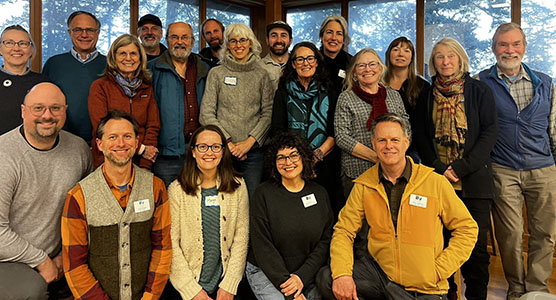“No one has shown that our current CAO rules do not adequately protect the functions and values of our critical areas.” Peg Manning Jan. 6, 2012
Correction: “The number of species listed as threatened or endangered or which are candidates for listing in the Salish Sea almost doubled in just two years.” The SeaDoc Society: https://www.seadocsociety.org/species-of-concern-2011
“A substantial number of the privately owned parcels in the county (I have heard estimates approaching 50 percent) are undeveloped. The proposed changes, which do not “water down” the existing CAO but substantially increase its burdens, would keep many, if not most, of them from being “developed” (i.e., having a home built on them).” Peg Manning Jan. 6, 2012
Correction: The Reasonable Use Exception will allow use of property in Critical Areas. The Reasonable Use Exception adopted by our County Council allows up to ½-acre development per parcel. This ½-acre maximum is much larger than permitted by other counties. Lawns and gardens are permitted in our Critical Areas and their buffers but are prohibited under other CAO Reasonable Use Exceptions. In our Reasonable Use Exception, the first 2500 square feet of development does not require mitigation. This allows owners without a lot of money to build on a parcel encumbered by a Critical Area and/or its buffer.
The county has no qualified people to help a homeowner assess Critical Areas on their parcel.
Correction: A grant has been funded to hire a wetlands expert to help property owners locate wetlands on their land and classify their importance.
Non-conforming is being made more restrictive.
Correction: The non-conforming provisions are being made less restrictive. Currently, if a house is destroyed more than 75%, it can only be rebuilt in a location that conforms to the existing codes. Under the new regulation, your house could be destroyed 100% (or less) and still be rebuilt in its original location. Non-conforming uses can continue and even be changed.
“if you disturb the soil, cut brush you need the County’s permission.” John Evans The Journal of the San Juans Feb. 1, 2012.
Correction:
On January 24, 2012, Councilors Miller, Fralick, Peterson, and Stephens voted to add “or replacement of existing uses” to the activities that are exempt from CAO regulations. “Exemptions to critical area regulations are necessary to ensure reasonable and cost effective administration of the regulations.” No permit would be required to replace an existing use with a new use as long as, “soil erosion is controlled, disturbed areas are stabilized, and that actions do not have an additional adverse effect on critical area functions and values;” The phrases in italics are from the General Section of the CAO Update. The property owner decides when to seek planning permission.
It is unkind to spread misinformation about the CAO. Most people do not carefully read the CAO Ordinance Updates. Talk to your County Councilor about your specific concerns, and you will find that my answers to the misinformation statements are correct.
Janet Alderton
Orcas Island
**If you are reading theOrcasonian for free, thank your fellow islanders. If you would like to support theOrcasonian CLICK HERE to set your modestly-priced, voluntary subscription. Otherwise, no worries; we’re happy to share with you.**








Janet,
You seem to be implying that the *correlation* between the increase in the number of threatened and endangered species in the Salish Sea is somehow *caused* by our current land use regulations and enforcement.
Is there any significant evidence for this claimed causal effect?
(Sorry, can’t type today)
Janet,
You seem to be implying that the *correlation* between the increase in the number of threatened and endangered species in the Salish Sea and our current land use regulations demonstrates that the decline of species is somehow *caused* by our current land use regulations and enforcement.
Is there any significant evidence for this claimed causal effect?
There is a new idea, brought here now with the new CAO.
This, that what presently exists as a principled right, not the gift or grant of a governing law but as acknowledged by our constitution as an inherent right, is now to become otherwise a government granted right to use your property. This new granted right to use, occupy or alter property, if so decided in your favor to use. Comes after permission is given not prior.
All properties, (if accepted as presently proposed) do become subject to a loss in a clear and present principled right to the use of their private property without prior permission.
Literally hundreds of parcels are 100% encumbered by one or more critical area overlays. How on earth can it be considered “reasonable” to allow 2500 square feet of 10 acres to be developed without mitigation. The “Reasonable Use Exemption” is a thinly veiled and ultimately fruitless attempt to immunize the county from regulatory takings lawsuits, which will come as surly as the sun rises over the critical areas!
Keep in mind that that 2500 SF that the County may “allow” you to use on your 10 acres must include your driveway and drainfield and all other “development.” So it’s nothing close to even a 2500 sq house (1250 SF footprint). And the best part is that CDPD makes the decision about where to put your house, if they allow you have one in the first place.